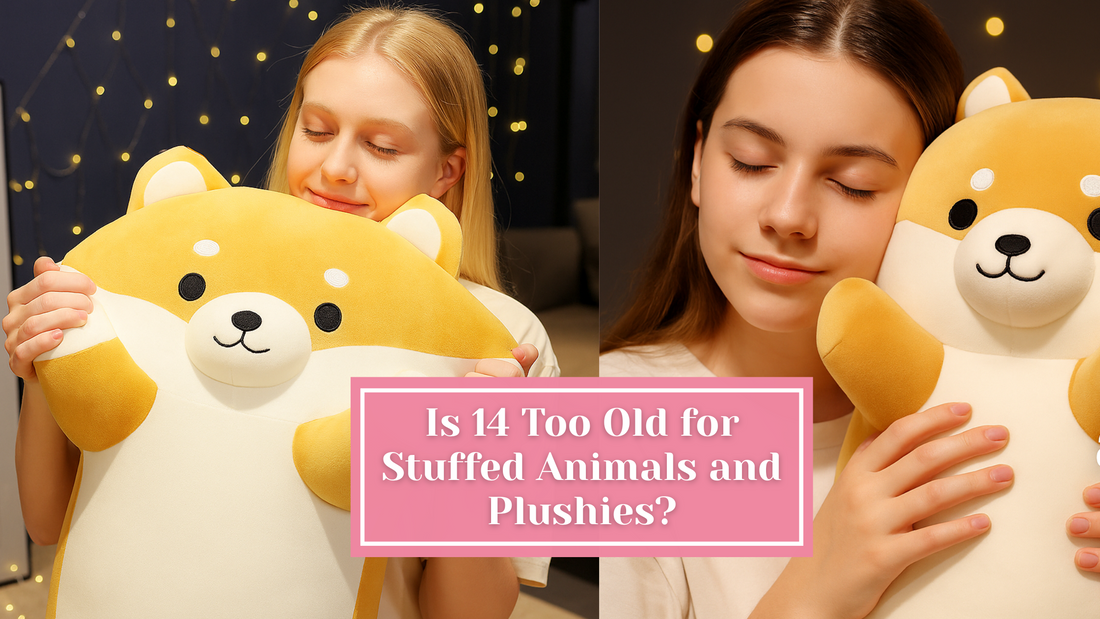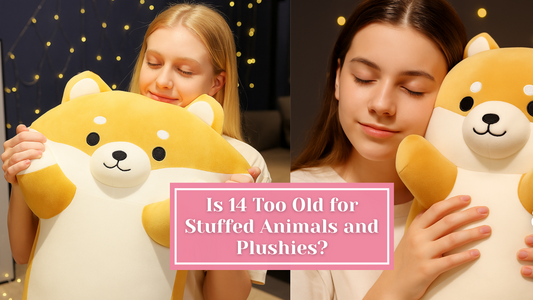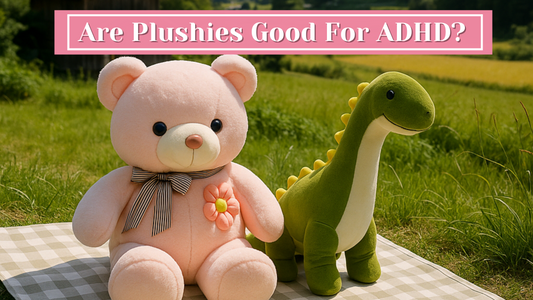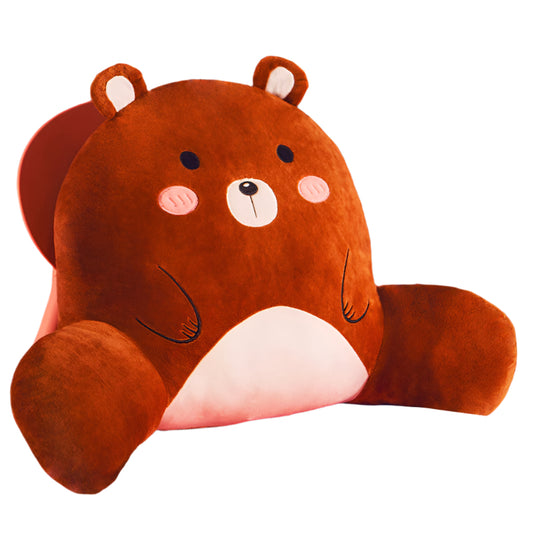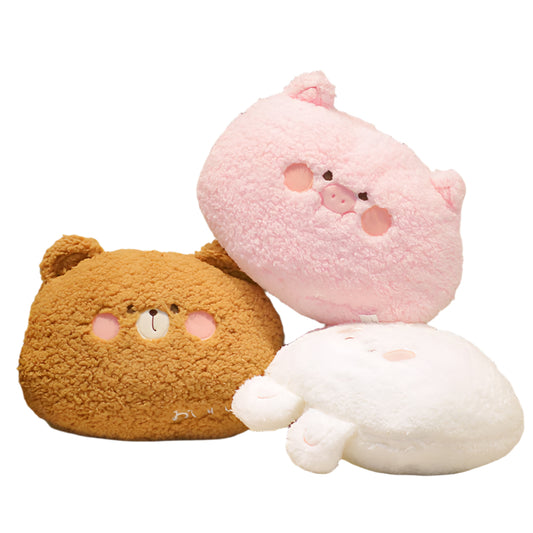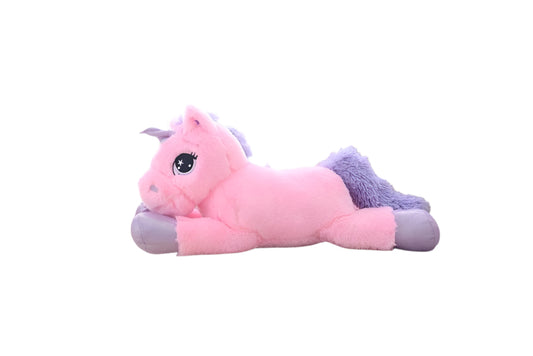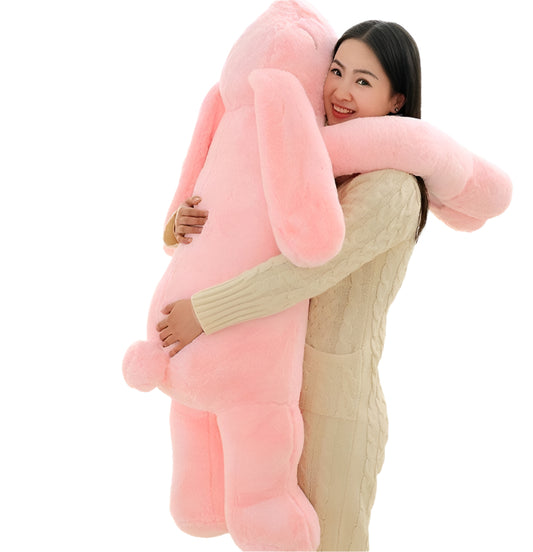Why Every Teenagers Are obsessed with plushies and when is the right time to let go of your plush toys
In a world that often equates maturity with the abandonment of childhood comforts, many teenagers find themselves questioning the appropriateness of their attachments. One such question that arises is, "Is 14 too old for stuffed animals?" The answer, rooted in psychology, culture, and personal well-being, is a resounding no. Embracing stuffed animals at any age, especially during adolescence, can offer emotional support, cultural connection, and a sense of identity.
.The “cuteness” factor activates caregiving instincts and dopamine pathways, making cute plushies powerful mood boosters. However, there comes a time when clinging too tightly can hinder emotional growth—signaled by distress at separation or interference with daily life. This guide unpacks the “why” and the “when,” helping teens and parents navigate plushie devotion with empathy and insight.
Why Teenagers Develop Strong Attachments to Plushies
1. Transitional Objects & Emotional Security
Psychologists describe plushies as “transitional objects” that help children—and by extension teens—navigate the shift from dependence to independence. These stuffed companions symbolize safety and familiarity during stressful transitions (e.g., school changes, puberty)
2. Stress Relief & Oxytocin Release
Hugging a soft plush triggers oxytocin (the “bonding hormone”) and reduces cortisol (the stress hormone), producing a calming effect. This physiological response explains why teens reach for plushies during anxiety or overwhelm.
3. Sensory Regulation & Comfort
Many teenagers with sensory needs—from general restlessness to ADHD—find relief in the tactile feedback of weighted or extra‑fluffy plushies. Deep‑pressure input helps ground and focus the mind.
4. Cuteness Psychology & Dopamine
The “baby schema”—characterized by big eyes, round faces, and soft features—triggers innate caregiving and pleasure responses in the brain. Viewing or cuddling cute plushies activates dopamine pathways, subtly boosting mood and motivation.
5.Creative Play & Identity Formation
Stuffed animals serve as props for imaginative play and self‑expression well into adolescence. Teens often assign personalities to their plushies, fostering creativity and emotional exploration
The Psychology Behind Children’s (and Teens’) Love of Stuffed Animals
1.Transitional Objects & Emotional Security
From infancy through teenage years, transitional objects (like plushies) bridge the familiar and the unknown. They root us in childhood safety even as we grow, helping us cope with separation anxiety, school stress, or family changes.
2. Oxytocin Release & Stress Reduction
Studies show hugging a soft toy releases oxytocin (the “bonding hormone”) and lowers cortisol (the stress hormone), producing calmness and improving mood—critical for teens navigating academic and social pressures .
3. Baby Schema & Dopamine Hits
Cute features—big eyes, round shapes, pastel colors—activate the brain’s “baby schema,” triggering dopamine release and a caregiving response. This “cuteness high” can be a quick, healthy mood boost during stressful teen days
READ: Science Behind Emotional Support Stuffed Animals
The Cultural Allure of Kawaii & Japanese Plushies
1. Kawaii as Self‑Expression
In Japan, kawaii plushies represent more than cuteness: they’re a cultural movement rejecting rigid adult norms. Teens embrace kawaii to assert identity and emotional authenticity in a high‑pressure society.
2. Japanese Plushies as Emotional Ambassadors
Iconic characters like Hello Kitty and Rilakkuma aren’t just merchandise; they’re emotional support icons. Their neutral expressions allow teens to project their own feelings, creating a non‑judgmental outlet.
3.Collecting as Community
Teen collectors of Japanese plushies often find belonging in online communities (e.g., fan groups, Reddit threads), where shared passion reduces isolation and fosters peer support.
When It’s Time to Let Go: Signs You’ve Outgrown Your Plush Companion
1. Loss of Comfort vs. Interference
If a plushie no longer offers genuine comfort—merely clutter—or if saving it prevents new healthy coping tools, it may be time to retire it.
2. Distress at Separation
A lingering, debilitating panic whenever separated from a plushie—especially if it disrupts social or academic activities—can indicate over‑reliance. Healthy attachment feels comforting but not crippling.
3. Physical Wear & Hygienic Concerns
After years of hugs, a plush can harbor dirt, dust mites, or allergens. If cleaning no longer restores it, safely passing it on honors its purpose while prioritizing health.
4. Transition Milestones
Key life events—moving away to college, starting a serious job, or significant relationship changes—often signal a natural shift away from childhood objects. Letting go can be a rite of passage, symbolizing growth and resilience.
MUST READ: 25 Smart Storage Ideas For Every Space
How to Say Goodbye (When You’re Ready)
1. Gradual Separation
Store the plushie in a box for a few weeks before deciding. This “test separation” helps gauge whether you still need its comfort.
2. Repurposing & Memory Keepers
Transform a well‑loved plushie into a keepsake (e.g., framed, stuffed into a pillow cover) to honor its role without needing constant presence.
3. Sharing Comfort
Donate to a younger sibling, local shelter, or children’s hospital—knowing your plushie brings joy to someone else can ease the let‑go process.
Healthy Goodbye Rituals
- Storage Test: Pack the plushie away for weeks—if its absence feels freeing rather than distressing, the time may be right.
- Keepsake Creation: Transform beloved plushies into pillows or memory quilts, preserving joy without constant presence.
- Donation & Sharing: Passing a plushie to a younger sibling or donating to a children’s charity spreads comfort forward.
Is It Bad That I’m Attached to a Plushie? When Is Attachment Healthy vs. Harmful?
- Healthy Attachment: Your plushie is a supportive tool, used alongside other coping strategies (journaling, friends, mindfulness).
- Harmful Attachment: You feel panic at slight separation or use the plushie to avoid real‑world challenges (homework, relationships).
If you find yourself in the latter, consider expanding your support system—talk to friends, counselors, or use additional self‑care tools like weighted blankets.
Is It Possible to Be Too Old for Plushies?
No fixed age dictates plushie retirement. “Kidult” culture shows adults happily collecting and sleeping with plushies, citing ongoing emotional benefits. The key is function over age:
- If a plushie continues to comfort and supports well‑being, keep it—whether you’re 14, 24, or 44.
- If it hinders growth or becomes clutter, it’s okay to transition to other tools.
Is It Normal for Teenagers to Have Stuffed Toys?
Yes—absolutely. Psychologists identify stuffed animals as transitional objects that help people of all ages manage change and stress. Even into adolescence, teens face upheavals such as changing schools, evolving social circles, and puberty. Huggable plushies become portable “safe havens,” offering a sense of security when life feels unpredictable.
- Peer Support & Shared Culture: Collecting kawaii plushies or limited‑edition Japanese plushies fosters a sense of belonging in online communities—Reddit’s r/plushies is overflowing with teens sharing their collections and mental health tips.
- Emotional Outlet: Teens are still learning emotional regulation. A plushie offers a nonverbal confidant—no judgment, just soft comfort.
Is It Normal to Have Plushies as Best Friends?
Many teens—and adults—confide in plushies as “best friends,” a dynamic supported by psychology:
- Safe Confidant: Plushies never judge or interrupt, making them ideal for sorting thoughts.
- Emotional Rehearsal: Talking through problems with a plushie can clarify feelings before sharing with real friends or family.
This imaginary friendship often accompanies real social bonds, not replaces them.
FAQs: Plushies & Adolescence
Q1: Is it normal for a teenager to sleep with a plushie?
Yes—experts agree there’s no “too old”—if it helps you relax, keep it by your pillow.
Q2: Are weighted plushies safe for teens?
When under 5 lbs and used properly, they’re a safe way to gain deep pressure benefits.
Q3: How do I choose the right kawaii plushie?
Pick one with soft fabric, a design you connect with emotionally, and ideally a removable cover for easy cleaning.
Conclusion
Teenagers’ obsession with cute plushies, especially kawaii and Japanese plushies, is a healthy, time‑tested coping mechanism rooted in developmental psychology and cultural expression. These soft companions provide emotional security, sensory regulation, and creative outlets, helping teens navigate life’s transitions. While there’s no age cap on comfort, recognizing when attachment shifts from supportive to restrictive is key. By honoring their plushie journey—whether through collecting, sharing, or gently retiring beloved friends—teens can cultivate resilience, self‑awareness, and lifelong self‑care habits.

